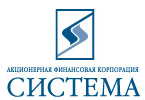|
|
|
 |
Virtual Tours round the Russian Museum The Rossi Wing |
     |
The Russian Museum
»
The Rossi Wing
»
Room 9
Room 9Miniature and Decorative Painting of the 19th – 20th Centuries Room IX shows works of miniature and decorative painting from the nineteenth and twentieth centuries. There are five unique centres of lacquer painting in Russia – Fedoskino and Zhostovo in Moscow Region, Palekh and Kholui in Ivanovo Region and Mstiora in Vladimir Region. Together, they represent two different forms of this traditional craft. The village of Fedoskino is commonly regarded as the “home of Russian lacquer.” In the late eighteenth century, a merchant called Pyotr Korobov opened a factory in nearby Danilkovo, which produced wares made of papier-mâché. In 1818, the plant was inherited by his son-in-law, Pyotr Lukutin. Right up until the early twentieth century, the factory remained in the hands of Korobov’s descendants, who perfected the art of miniature lacquer painting. The factory produced fashionable snuffboxes, caskets, boxes, purses and cases for cigars, spectacles and stamps of all shapes and sizes. The objects were made from compressed paper pulp (papier-mâché). Their black backgrounds were covered in varnish, on which miniature compositions were painted in oil. Such images were based on paintings or drawings by Russian and foreign artists. Landscapes, portraits, townscapes, scenes from folk life and ornamental compositions were painted on the factory’s produce. In the early nineteenth century, members of the Vishnyakov family opened their own varnished miniature workshops in the villages of Ostashkovo and Zhostovo. Unlike Lukutin, who created works for the upper classes, the Vishnyakov family addressed all sections of the population. Their works depicted such popular scenes from folk life as tea drinking, winter sledging and summer troika rides. In the early nineteenth century, in addition to boxes made from papier- mâché, trays were also painted in Ostashkovo and Zhostovo. Initially, they were decorated with similar themes and compositions. The Zhostovo masters then became better acquainted with the achievements of such other centres of tray production as Nizhny Tagil and St Petersburg. The creative assimilation of their experience, combined with the local artistic traditions, led to the development of an original style and unique system of decorative painting on trays by the 1880s. The diverse forms of trays were decorated with floral compositions, painted freely in oils in a consistent order. Fedoskino and Zhostovo represent one aspect of the lacquer miniature and decorative painting, with its sources in modern easel art. The traditional icon-painting centres of Palekh, Mstiora and Kholui followed another path. In 1917, they faced a stark problem, when the revolution threatened the very existence of centuries of mastery and entire dynasties of traditional masters. These centres were obliged to abandon icon-painting, crossing over to lacquer miniature painting in Palekh (1924), Mstiora (1931) and Kholui (1934). Room IX includes I. I. Zubkov’s monumental panel Pottery Production (1932). This was one of the first attempts to create a decorative varnished panel for a public building. The artist works in the style of Palekh miniatures, showing all stages of pottery work, from mixing the clay to the creation and sale of the ceramic. Works of Rostov enamel from the nineteenth and twentieth centuries are an original form of miniature painting. Besides traditional icons, the Rostov enamel masters also painted miniature portraits and popular panoramas of the Rostov Kremlin and monasteries. At the turn of the century, the opening of special training workshops in Rostov led to the appearance of a new movement – small domestic objects and decorative jewellery with floral paintwork. |
The Project “The Russian Museum: the Virtual Branch” |